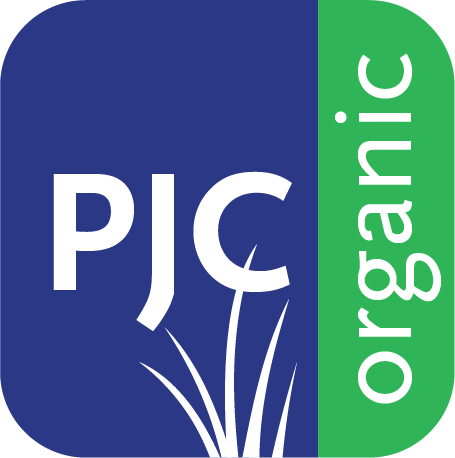2025 UMASS Turf Research Field Day: Turfgrass Innovations & Organic Insight
July 23, 2025 @ the Joseph Troll Turf Research Center, South Deerfield, MA
On a bright July day in Western Massachusetts, PJC Organic joined turf professionals from across the region for the 2025 UMASS Turf Research Field Day. This biennial open house offers a deep dive into the latest turf research and brings together researchers, extension professionals, turf managers, and vendors.
In alternating years, the event is hosted by UCONN at their Plant Science Research and Education Facilities, reinforcing the region’s commitment to innovation in turf management.
Research Highlights from the Field
Light Intensity & Winter Injury
Presenter: Dr. Masoud Arghavani, Visiting Scientist
Dr. Arghavani explored how Photosynthetically Active Radiation (PAR) during winter and early spring affects turf recovery after ice encasement.
- Low PAR (~150): Safer for turf under ice.
- High PAR (>600): Increased risk of light-induced winter injury, especially in perennial ryegrass and creeping bentgrass.
PJC’s Takeaway:
Turf blankets are valuable tools, but timing their removal is key. To reduce winter injury risks, plan to remove growth covers during overcast spring days—not sunny ones.
Selecting Drought-Resistant Fairway Grasses
Presenter: Dr. Michelle DaCosta, Professor of Turf Physiology
With fairways often comprising the largest managed acreage on a course, Dr. DaCosta shared practical strategies for water conservation:
- Focused cultivar selection for creeping bentgrass
- Emphasis on drought-tolerant strains
- Key physiological traits like deep rooting and stomatal control
These findings underscore the importance of strategic turf selection in increasingly water-sensitive environments.
Mid-Season Turf Weed Update
Presenter: Randall Prostak, M.S., Extension Specialist, Weed Management
Mid-season is prime time for reassessing weed management strategies. While PJC Organic’s approach diverges significantly from Randy’s synthetic-leaning methods, his insights always offer useful takeaways.
A classic gem from the day: “Early Down – Early Gone.”
This phrase underscores the persistent practice of early (often premature) herbicide application—sometimes in frozen or dormant conditions. For us, these moments are golden opportunities to highlight viable organic alternatives that respect turf biology and seasonal cues.
Soil Sampling Best Practices
Presenter: Dr. Sam Glaze-Corcoran, Director, UMass Soil & Plant Tissue Testing Laboratory
Proper soil sampling is the cornerstone of informed turf management. Dr. Glaze-Corcoran explained that sampling techniques must be tailored to each plant system for the most accurate lab results. Her turf-specific guidelines included:
- Remove clippings, grass, thatch, and roots before sending in a sample
- Avoid wet soil—let samples air-dry before shipping
- Sample depth for turf: 4″ to 6″
- Be consistent with depth, not too shallow or too deep
- Residential lawns: take 8–10 cores, mix in a bucket, and send a well-mixed portion
PJC’s recommendation:
Soil test every 3 years, or every 2 years if your pH is in range or trends alkaline. For the best comparability, always sample at the same time of year, and remember that a single lab test represents just a small slice of your client’s overall soil profile.
Assessing Soil Compaction
Presenter: Dr. Artie Siller, Extension Specialist, Soil Health
Using penetrometers (both digital and analog), attendees measured compaction zones where 300 psi was exceeded.
PJC’s Tool of Choice:
A 10½” long, ⅜” flathead screwdriver—simple, effective, and client-friendly. Its depth of penetration under normal pressure is easy to measure and explain on-site.
Chinch Bug Management in New England
Presenter: Sanjok Timalsina, Graduate Student, Kostromytska Lab
Sanjok presented research plots showing chinch bug life stages, vacuuming/flotation monitoring, and the important role of big-eyed bugs as natural predators.
Key Facts:
- Thrive in hot, dry, sunny lawns with heavy thatch
- Often mistaken for drought stress
- Multiple generations possible per season in the Northeast
PJC’s Perspective:
Organic lawn care reduces thatch by encouraging beneficial microbes. While transitioning, monitor thatch closely. PJC also recommends endophyte-enhanced cool-season grasses like perennial rye and fescues, which deter chinch bugs by making turf less palatable.
Managing Turfgrass Ants on Golf Courses
Presenter: Dr. Olga Kostromytska, Extension Assistant Professor, Turf Entomology
Though no ants were spotted during the session, Dr. Kostromytska discussed:
- Nematode control methods
- Baiting and fungal options
- Ants’ role as beneficial predators in many lawn systems
PJC Takeaway:
Outside of golf greens, ants can be a natural ally, consuming grub eggs and early-stage grubs. Keep in mind:
- Over 110 ant species in MA
- Queens may live 25+ years and reside 15” deep or more
- Unless a treatment reaches the queen, it’s unlikely to be effective
Randy’s mantra applies again here: “Early Down – Early Gone”—don’t waste effort on surface-level fixes.
Final Thoughts
The UMASS Turf Research Field Day continues to be an invaluable opportunity for turf professionals to connect academic insight with real-world application. While many talks leaned on synthetic methods, the science often pointed to underlying biological and environmental principles that support organic practices.
At PJC Organic, we remain committed to advancing turf health through research-backed, sustainable, and soil health-focused solutions.
